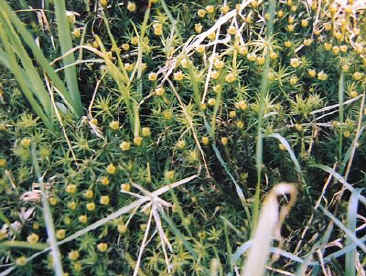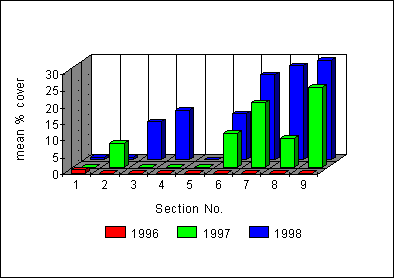The Woodland Education Centre
Heathland Restoration Project
Mosses on the Project Site
 Mosses are often an important part of a heathland flora, carpeting the areas
between heather plants and in later stages growing beneath the closed canopy where the
humidity is high. They have become increasingly important on the project site.
Mosses are often an important part of a heathland flora, carpeting the areas
between heather plants and in later stages growing beneath the closed canopy where the
humidity is high. They have become increasingly important on the project site.
Initially, very few mosses were found on the site. These included Hypnum andoi, which was probably a relic of the original woodland cover and Brachythecium rutabulum (species list). Polytrichum formosum, which is characteristic of acid soils, was present in very small amounts (Figure below). By 1998, Polytrichum formosum had become the third most dominant species on the site (Table) and was co-dominant with Heather in section 9. It is likely that other species of Polytrichum more characteristic of heaths (P. juniperum and P. piliferum) will soon begin to colonise the area.

Distribution of Polytrichum formosum 1996-1998
(belt transect results only, since no
random available for 1996)
Other moss species characteristic of
heathlands which occur on the project site are Campylopus paradoxus, C.
pyriformis and Hypnum jutlandicum (species list).
Continue to heath species distribution![]()
| Heathland Restoration Project Report | ||||
Other Lowland Heaths in East Devon
